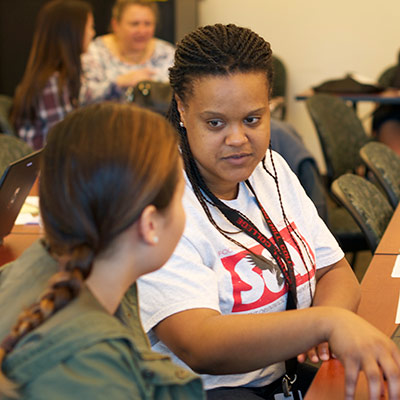Archive Reminder
The listings on this page are archived Degree and Certificate Programs information
through 2020-2021.
Search Again
Print Version
| Effective: Summer 2018 |
| PHT 55B | PHARMACOLOGY B | 3 Unit(s) |
|
| Prerequisites: Prerequisite: PHT 55A. |
| Grade Type: Letter Grade Only |
| Not Repeatable. |
| FHGE: Non-GE Transferable: CSU |
| 3 hours lecture. (36 hours total per quarter) |
| | |
Student Learning Outcomes - - Describe the basic anatomy and physiology of body tissues and membranes,integumentary, and skeletal systems
- Identify common pathophysiology of body tissues and membranes, integumentary,muscular,skeletal and prescription/non-prescription remedies,side effects and dosages
|
Description - |
| A study of the fundamentals of pharmacology with a focus on the anatomy, physiology and application of pharmacological principles related to various body systems and disorders; the cardiovascular system, respiratory system and gastrointestinal system. Drugs are discussed in relation to their mechanism of action, indications, adverse effects, contraindications, precautions and drug interactions. Intended for students in the Pharmacy Technician Program; enrollment is limited to students accepted in the program. |
Course Objectives - |
| The student will be able to:
- Describe the basic anatomy and physiology of specific body systems and explain all components of pharmacology related to specific body systems; the cardiovascular system, respiratory system and gastrointestinal system.
- Explain the special pharmacological accommodations needed for specific patient populations.
- Recall and identify the top 100 commonly prescribed drugs used at this time.
|
Special Facilities and/or Equipment - |
| None required.
|
Course Content (Body of knowledge) - |
| - Specific body systems and disorders
- Pharmacology of the heart
- Cardiac physiology and pathology
- Cardiac function
- Main diseases of the heart
- Treatment of heart failure
- Chronic heart failure (CHF)
- Drug therapy options
- Adrenergic beta blockers
- Vasodilators
- Diuretics
- Cardiac glycosides
- Non-pharmacological options
- Antiarrythmic drugs
- Types of arrhythimas
- Class 1 antiarrhythmic drugs: sodium channel blockers
- Class 2 antiarrhythmic drugs: beta blockers
- Class 3 antiarrhythmic drugs: potassium channel blockers
- Class 4 antiarrhythmic drugs: calcium channel blockers
- Special considerations and preferred therapy for selected arrhythmias
- Antianginal drugs
- Classification of Angina Pectoris
- Drug therapy options
- Nitrates
- Beta-adrenergic blocking drugs
- Calcium channel blockers
- Preferred therapy for treatment of Angina Pectoris
- Non-pharmacological options
- Pharmacology of the vascular and renal systems
- Diuretics
- Anatomy and physiology of the renal system
- Conditions associated with renal dysfunction
- Types of diuretics
- Osmotic diuretics
- Carbonic anhydrase inhibitors
- Thiazide and thiazide-like diuretics
- Loop/organic acid diuretics
- Potassium sparing diuretics
- ADH antagonists and miscellaneous diuretics
- Special considerations
- Incompatibilities and drug interactions
- Antihypertensives
- Physiological factors controlling blood pressure
- Various drugs used to control blood pressure
- Diuretics
- Vasodilators
- Angiotensin II antagonists
- Drugs that reduce sympathetic activity
- Treatment of hypertensive crisis
- Non-pharmacological options
- Patient education and monitoring
- Anticoagulants and coagulants
- Coagulation cascade
- Anticoagulant mechanisms of action
- Special considerations and contraindications with anticoagulants
- Drug options
- Heparins
- Oral anticoagulant: Warfarin
- Antiplatelet drugs
- Fibrinolytic/thrombolytic drugs
- Monitoring coagulation
- Coagulants and hemostatics
- Hypolipidemic drugs
- Atherosclerosis and arterial disease
- Drug options
- Hypolipidemic drugs
- Anti-lipemic drugs
- Other hypolipiedmic drugs
- Contraindications and drug interactions
- Non-pharmacological options
- Antianemics
- Causes of anemia
- Types of anemia
- Iron deficiency anemia
- Cobalamin deficiency anemia
- Folic acid deficiency
- Drug options for the treatment of various anemia
- Erythropoietin stimulating agents
- Drugs that affect the respiratory system
- Anatomy and physiology of the respiratory system
- Respiratory diseases
- Asthma
- COPD
- Emphysema
- Chronic bronchitis
- Allergic reaction
- Role of the autonomic nervous system
- Role of the immune system
- Action of histamine
- Drug options
- Mast cell release inhibitors
- Antihistamine--H1 antagonists
- Bronchodilators
- Anti-inflammatory drugs
- Anti-allergic agents
- Mucolytics and expectorants
- Non-pharmacological options
- Pharmacology of the GI tract
- Anatomy and physiology of the GI system
- GERD and ulcer production
- Emesis
- Bowel function and intestinal motility
- Drug therapy options
- Acid neutralization (antacids)
- Histamine 2 blockers
- Proton pump Inhibitors
- Sucralfate
- Miscellaneous agents
- Anti-diarrheals
- Laxatives and cathartics
- Non-pharmacological options
- Drug therapy for specific patient populations
- Geriatric patients
- Drug use in elderly
- Pharmacokinetic considerations
- Effects of age on drug response
- Drug compliance in the elderly
- Pediatric patients
- Pharmacokinetic considerations
- Modified dosing
- Dose calculations
- Effects of age on drug response
- Special considerations
- Drug identification: generic name, brand names, and classification of the Top 100 most commonly prescribed drugs on the market at this time (most recent year)
|
Methods of Evaluation - |
| The following evaluation methods may be used, but are not limited to:
- Objective exams
- Oral presentations
- Cooperative learning assignments
- Research papers
- Case studies
- Quizzes
|
Representative Text(s) - |
| Required:
Hitner, Henry, and Barbara Nagle. Pharmacology: An Introduction. 7th ed. Boston, MA: McGraw Hill, 2016.
|
Disciplines - |
| Pharmacy Technology
|
| |
Method of Instruction - |
| - Lecture presentations
- Classroom discussion on lecture content
- Individual or group presentations regarding research topics followed by in-class discussion and evaluation
- Small group recitation sessions to discuss case studies with an emphasis on collaborative learning
|
| |
Lab Content - |
| Not applicable.
|
| |
Types and/or Examples of Required Reading, Writing and Outside of Class Assignments - |
| - Reading Assignments: Weekly reading assignments from text and outside sources ranging from 20-30 pages per week.
- Review of handouts, lecture notes and relevant reading material.
- Research and planning of individual projects.
|
Search Again


